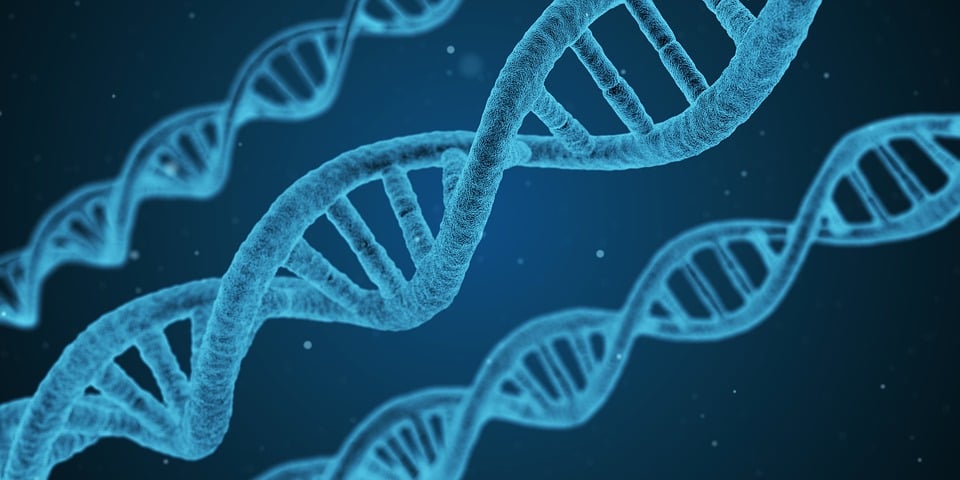Usually, I try to focus my blog posts on applied research. But a study came out recently that has gotten enough press that some of my clients have asked me about it, so I decided to focus on that study for this post. I hope it will help some of you with that ever elusive question of “why?”.

The study
The study, by MacLean et al., looked at the impact of hormones on aggression in dogs. When most people think of aggression in dogs, they probably think of testosterone. It is true that testosterone has been associated with aggression in many species. However, like many other behaviors, aggression is complex and is influenced by many different factors. Arginine vasopressin is another hormone that has been associated with aggression in other species, but it has never been looked at in dogs.
This paper reported on two different experiments. The first compared vasopressin levels in dog aggressive and non-aggressive dogs. The second study compared vasopressin levels in service dogs and pet dogs. It also tested to see if vasopressin levels could predict a dog’s behavior during a temperament test. Both studies also looked at oxytocin levels. You may have heard of oxytocin – it’s often referred to as the “love hormone” in popular media. It is, of course, more complicated than that, but it is often associated with affiliative behavior and may also have a dampening effect on aggression.
The results
For the first experiment, dog aggressive dogs had vasopressin levels that were significantly different than non-aggressive dogs. Simple enough, right? Well, here is where it gets very complicated. There are different ways of measuring hormone levels in animals. To give you a very basic explanation, the researchers measured both “free” and “total” vasopressin levels in the dogs. Neuroscientists have not really sorted out how to interpret these different sampling methods. However, one explanation is that free levels are thought to represent acute activity – that is, hormone levels at the time of the study. Total levels, on the other hand, may be more reflective of long-term hormone levels. Free vasopressin was lower in aggressive dogs, but total vasopressin was higher in dogs with aggression. They found no difference in oxytocin levels between groups. This is enough to tell us that vasopressin appears to be important when it comes to aggressive behavior. It doesn’t tell us much more than that, but it’s a start and we have to start somewhere!
In the second experiment, dogs bred for service dog work showed higher levels of oxytocin than pet dogs. They did not differ in vasopressin levels. It makes sense that dogs bred to be service dogs would show higher levels of oxytocin, since this is associated with affiliation. Good service dogs should be social and enjoy being around people since they need to work closely with and around people on a daily basis.
Dogs that behaved aggressively toward a threatening stranger had higher levels of vasopressin than dogs that did not show aggression. So, again, vasopressin appears to be associated with aggression.

Why do we care?
Alright, fine. But, what does this all mean for dog owners or for trainers and behavior consultants? I think there are several important points that you can “take home” from these experiments.
- It’s complicated. This is something you will hear me say a lot. We always want a simple answer. This is especially true of clients, but I often catch myself trying to pinpoint a specific cause for a behavior or change in behavior. Very rarely is there one. In this case, vasopressin measurements were different in aggressive dogs than they were in non-aggressive dogs. But, for one measurement it was low and for another it was high. I am sure this is very confusing – researchers haven’t really even sorted out what this means yet. But, here’s the thing – behavior is complicated. Physiology (including hormones) is complicated. We don’t have all the answer yet and we still have a lot to learn. This is why more research is so desperately needed (something else you’ll hear me say a lot).
- It’s not all about testosterone. This is important, because neutering is a common recommendation for treating (or preventing) aggression. Neutering may not help. In fact, research on the impacts of neutering are mixed. At least one study (Neilson et al.) has found a reduction of aggression as a result of neutering, but other studies have found that neutered dogs are more aggressive (Guy et al.) or have found no difference in aggression between neutered and unneutered males (Casey et al.)
- It’s not all about vasopressin. Some of the articles I’ve seen on this study make it sound like we have now discovered the enemy when it comes to aggression – and it’s vasopressin! This is very misleading for two reasons. First, as I said above, it’s complicated and aggression almost never driven by a single factor. Second, this is only one study and you can never draw strong conclusions from only one study.
- Research like this – basic research – is all about gaining knowledge and understanding. It is the first step in a long process toward developing better prevention and treatment for behavior problems in dogs. Although we might not be able to do much with this information right now, it is critically important for making progress in the future. If it turns out that vasopressin play a large role in aggression in dogs and we can figure out how to reduce vasopressin levels, or how to prevent them from being high in the first place, then this information will help us reduce aggression in dogs in the long run, and that’s better for everyone.

I did not cover all of the details and nuances of this paper. If you would like to read the paper yourself, you can find it here.
Other references:
Casey, R.A., Loftus, B., Bolster, C., Richards, G.J., & Blackwell, E.J. (2014). Human directed aggression in domestic dogs (Canis familiaris): Occurance in different contexts and risk factors. Applied Animal Behaviour Science, 152, 52-63.
Guy, N.C., Luescher, U., Dohoo, S.E., Spangler, E., Miller, J.B., Dohoo, I.R. et al. 2001. Deomographic and aggressive charactericis of dogs in a generaly veterinary caseload. Applied Animal Behaviour Science, 74, 15-28.
Neilson, J.C., Eckstein, R.A., and Hart, B. 1997. Effects of castration on problem behaviors in males dogs with reference to age and duration of behavior. Journal of the American Veterinary Association, 211, 180-182.

